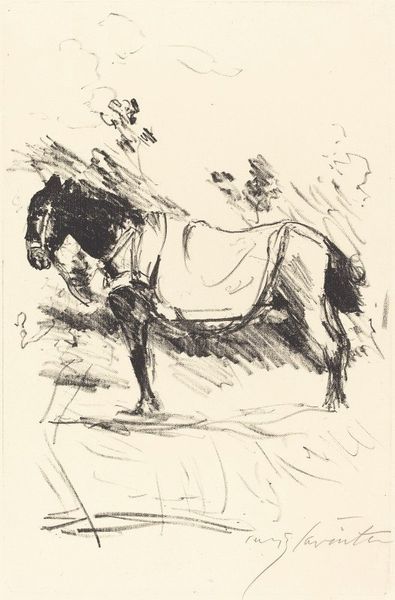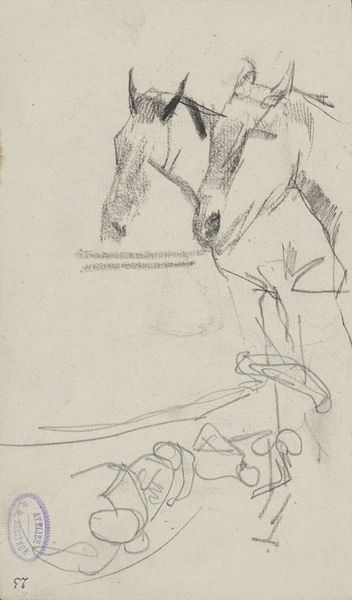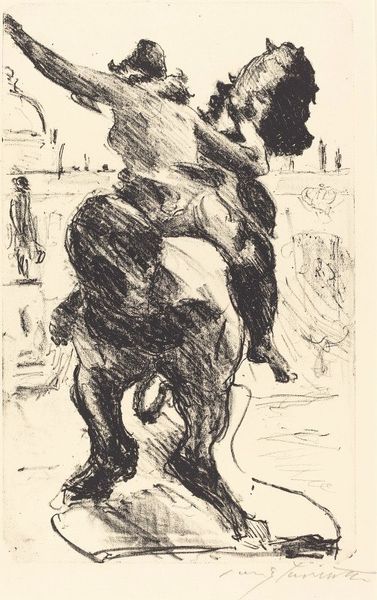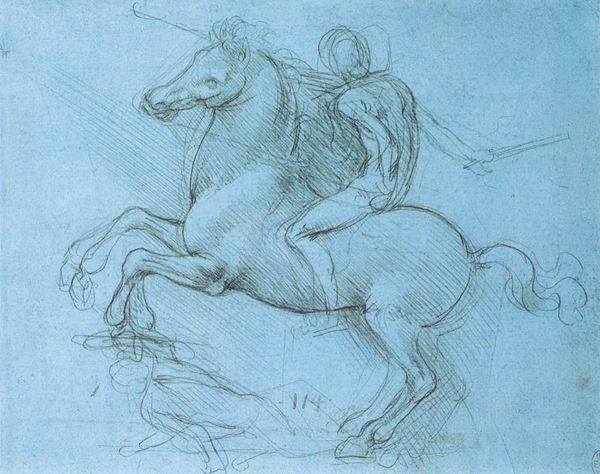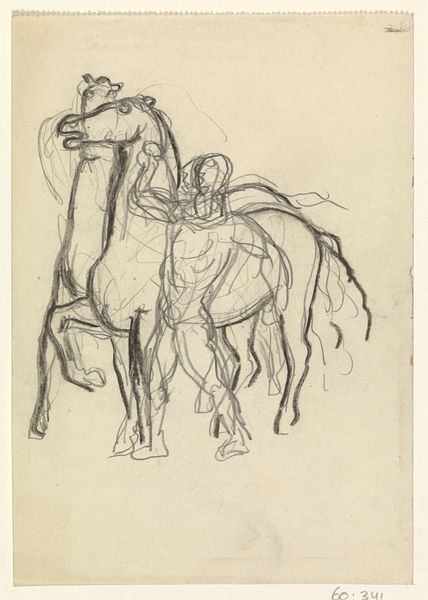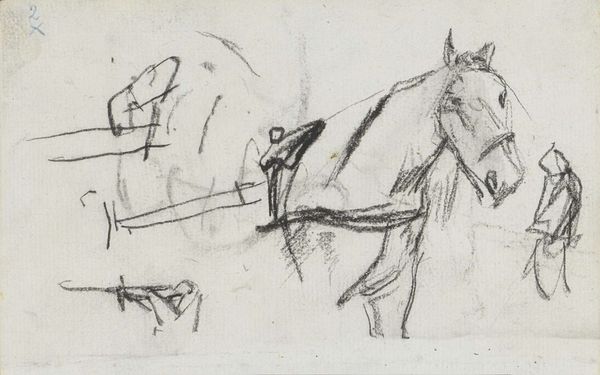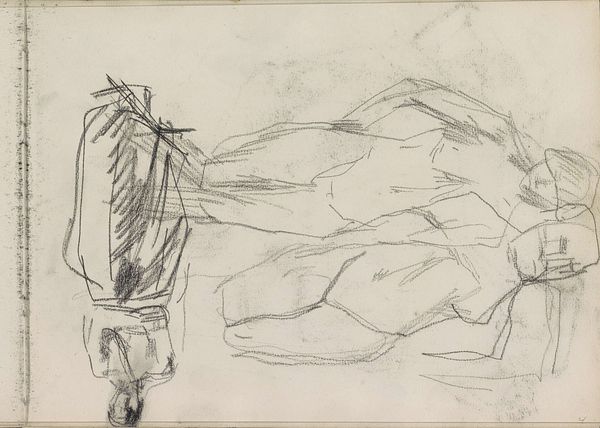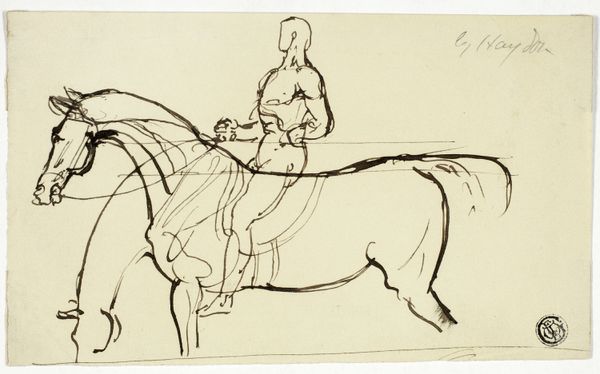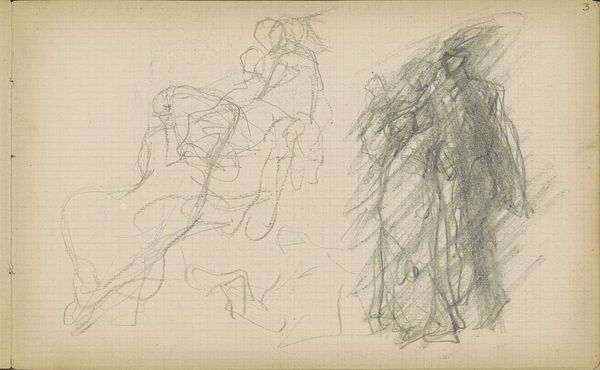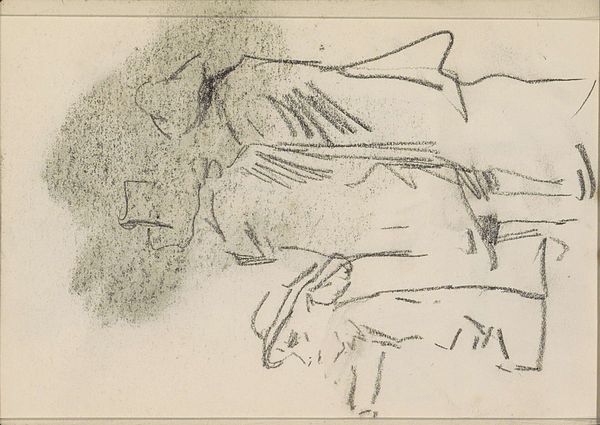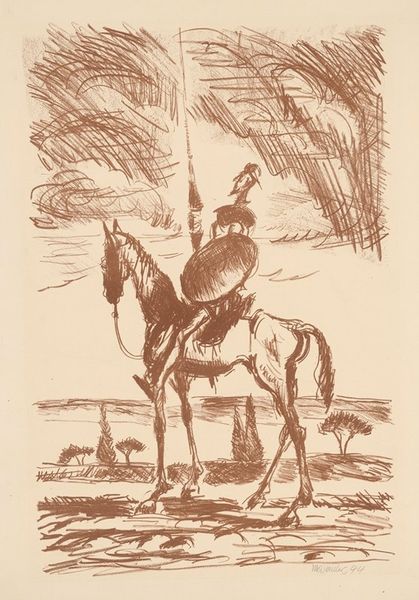
drawing
#
drawing
#
amateur sketch
#
light pencil work
#
pencil sketch
#
incomplete sketchy
#
personal sketchbook
#
sketch
#
horse
#
sketchbook drawing
#
pencil work
#
sketchbook art
#
fantasy sketch
#
initial sketch
Copyright: Public domain
Curator: We're looking at "Jockey," a pencil drawing from around 1862 by Edgar Degas. Editor: The first thing that strikes me is its immediacy. The blue pencil lines convey such a sense of movement and potential energy. Curator: Absolutely. Degas’s mark-making is particularly interesting here. Notice how he uses rapid, almost frenetic lines to capture the horse rearing up. The dynamism in this sketch anticipates his later, more finished works on similar themes. Editor: It feels like a study in power dynamics, not just between the rider and the horse, but also considering the context of horse racing itself—a sport deeply entwined with class, wealth, and even exploitation of both human and animal subjects. Do we know anything about his views toward that socio-political commentary? Curator: The art, as a visual expression, serves as an entry point into an event or topic, as his interests and motivations are in capturing fleeting moments, and in this piece the horse's and jockey's form, movement, and rhythm. The repetition of lines and shapes within the figures, contribute to an impression of a moment captured through quick observation. Editor: I find myself thinking about those repeated lines not as simply representing movement but perhaps conveying tension or unease. Is Degas passively documenting the spectacle, or subtly critiquing the spectacle it portrays? It is a view into a male dominated activity which emphasizes skill in some, and servitude to others. Curator: I suppose it’s the beauty of the piece—open to interpretation. Degas provides a springboard, the skeletal lines that define motion allow him to build dimension and shape that might not exist in the original observation of his model. He asks that we come with an open mind to finish what he sketches here. Editor: The sketch’s open-endedness, the freedom to complete the picture, encourages the viewers, then and now, to reflect on what such social events signify. It holds so much in this relatively unconstrained state.
Comments
No comments
Be the first to comment and join the conversation on the ultimate creative platform.
